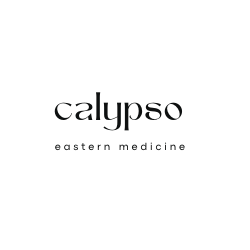Cupping Therapy
the oldest & Most modern trend
Cupping is one of the oldest forms of medicine recorded, loved by every ancient civilization and still providing pain relief after 6,000 years. Evidence of the Egyptians, Persians, Greeks, Chinese, Indian, and Latin Americans using cupping as a healing modality is very real millenia ago, and still to this day.
This ancient technique is based on a vaso-pneumatic suction system that uses “negative pressure” from fire or suction to pull adhesions, aka knots in tissues apart. This mechanism quite literally vacuums the tissues, and detoxifies muscles and blood overwhelmed with lifelong toxin accumulation.
Tissue is suctioned up into the cup, and stretches the tissues that hold the muscles in place. Cupping relaxes muscles and if a muscle is tight, cupping can stretch and open up the muscle tissue for releasing and re-oxygenation. Cupping also helps with capillary permeability, relief of muscle and fascia congestion and pain relief. Ultimately it benefits myofascial release, muscle relaxation, and improved blood circulation.
When we are “toxic”, interstitial debris floats in the blood stream and saturates tissues, which over time creates inflammation and dehydrates the muscles, leading to pain, stiffness, and discomfort.
In studies, cupping has been found to promote the production of heme-oxygenase-1 and 2, which promotes the production of new blood in the body. Cupping also promotes vasodilation of tissues in the body, promoting circulation locally and systemically, creating space for interstitial fluid to move, helps pull toxins out to be metabolized, and removes knots (known as adhesions) and stagnation in the body. Cupping marks tend to disappear quicker the more frequent patients are seen.
Cupping's effect on the digestive organs is to increase their digestive secretions and enhance their peristaltic movement. Cupping can awaken the appetite, strengthen the stomach and digestion, improve the bile flow and metabolism, relieve constipation and promote regularity of the bowels.
Cupping has a dramatic detoxifying effect on the skin and circulatory system. By increasing the flow of blood and plasma through the veins and arteries, cupping enhances the cleansing and removal of toxins. This detoxification may not be observable after just one treatment, but after about three to five treatments, there will be a noticeable improvement in the color of one's complexion.
Cupping is beneficial and indicated for multiple disorders affecting multiple organ systems:
Digestive system: constipation, diarrhea, (IBS) irritable bowel syndrome.
Metabolic: low energy, fatigue, anemia, atrophy of the tissues, cellulite, emaciation, weight gain - normalizes body weight.
Musculoskeletal: Local application, as appropriate, for back pain, arthritis, traumatic injuries, lumbago, sciatica.
Respiratory & Circulatory: asthma, bronchitis, common cold and flu, high blood pressure. Increased blood flow to the skin is therapeutic for many different skin disorders.
Nervous system: headaches, depression, emotional problems - balances the nervous system.
Gynecological: menstrual pain, suppressed or irregular menses
studies:
“Negative pressure causes stretching of the skin and underlying tissue and dilation of the capillaries. This stimulates an increase in tissue blood flow, eventually leading to capillary rupture and ecchymosis. Macrophages phagocytize the erythrocytes in the extravascular space which stimulates the production of Heme Oxygenase-1 (HO-1) to metabolize the heme. Heme catalysis results in the production of carbon monoxide (CO), biliverdin(BV)/bilirubin(BR) and iron. This process has been shown to have antioxidant, anti-inflammatory, antiproliferative, and neuromodulatory effects in animal and human systems. These substances also stimulate a shift of macrophages to the anti-inflammatory M2 phenotype. There is evidence that the effects are both local and systemic.”
https://www.ncbi.nlm.nih.gov/pubmed/29122256
Cupping has been demonstrated to improve hemoglobin saturation in the tissues and was measured with non invasive near infrared spectroscopy to assess concentration in hemoglobin levels. In one study “the concentration change in oxy-hemoglobin ([HbO2]), deoxy-hemoglobin ([Hb]), and blood volume in the course of cupping therapy over 13 volunteers on the infraspinatus muscle, where is usually applied for shoulder pains. Both a prominent drop in deoxy-hemoglobin and a significant elevation in oxy-hemoglobin were measured in the tissue surrounding the cupping site during both cupping and post-treatment, manifesting the enhancement of oxygen uptake. This resulting promotion indicates potential positive therapeutic effects of cupping therapy in hemodynamics for facilitating muscular functions.”
https://www.ncbi.nlm.nih.gov/pmc/articles/PMC5231294/

